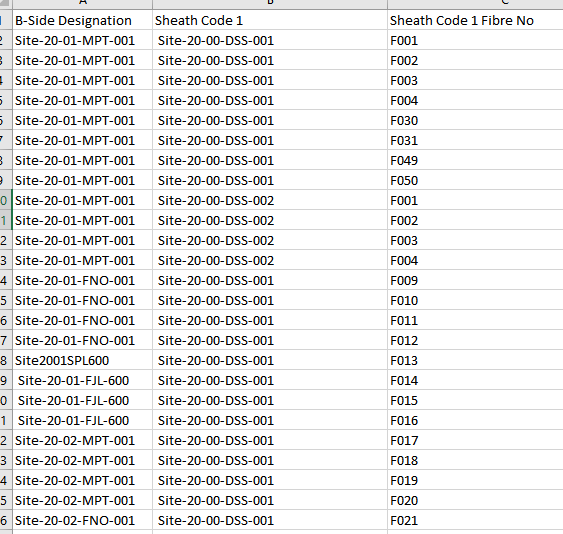Hi Everyone
I need help. I want to group a list of cable range into a textline per designation/sheath to feed Labeller for each designation's label.
Input data example as below:

I would like the output as below

Can anyone teach me how to do it? Thanks.








